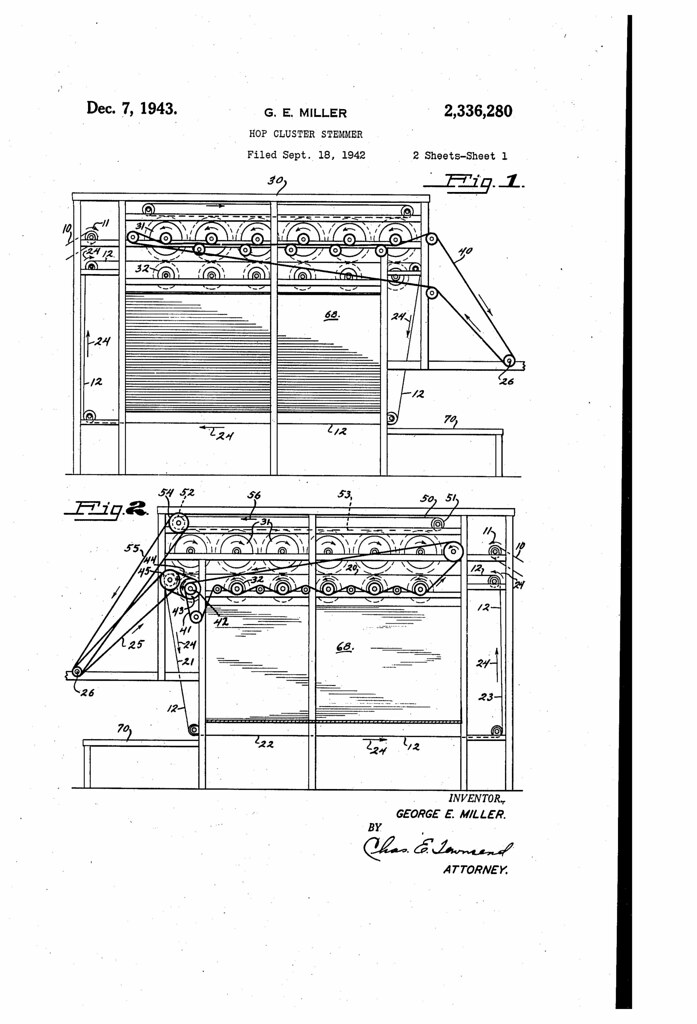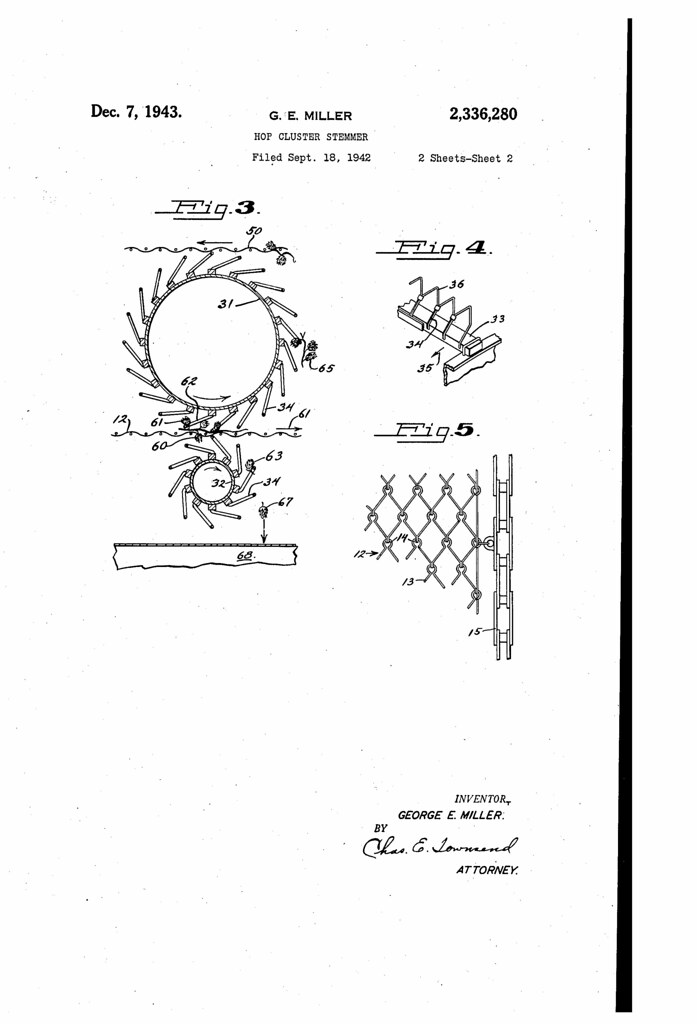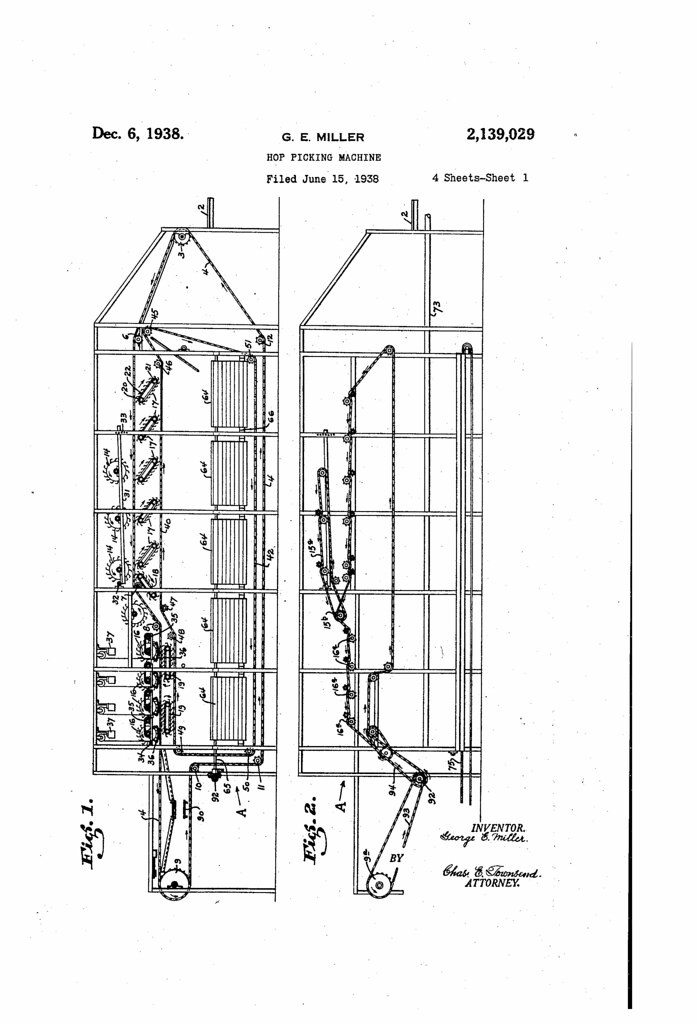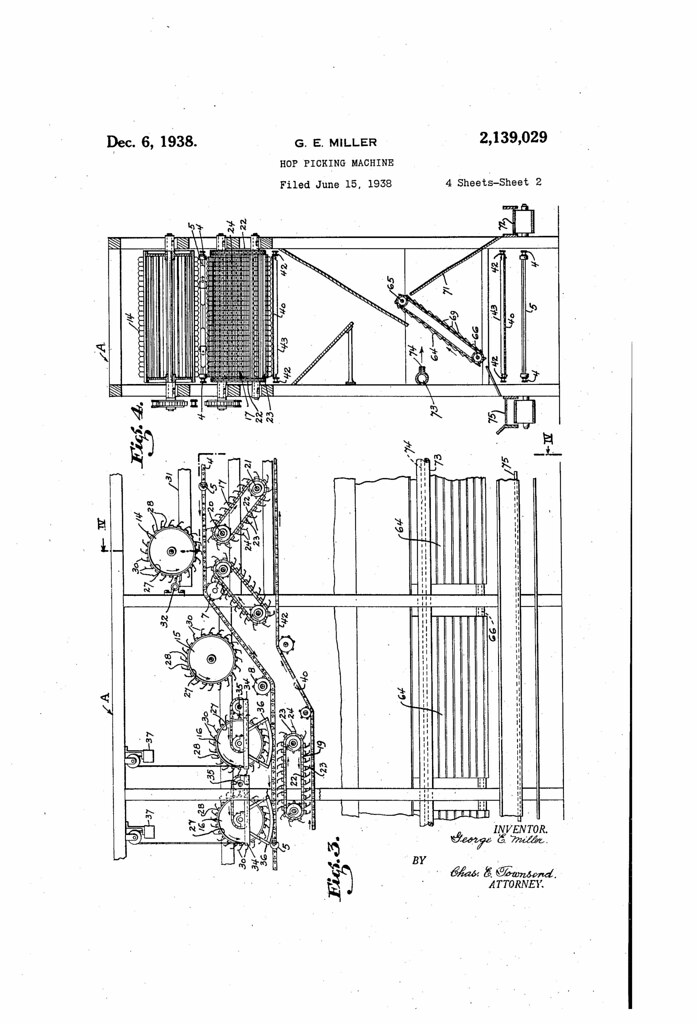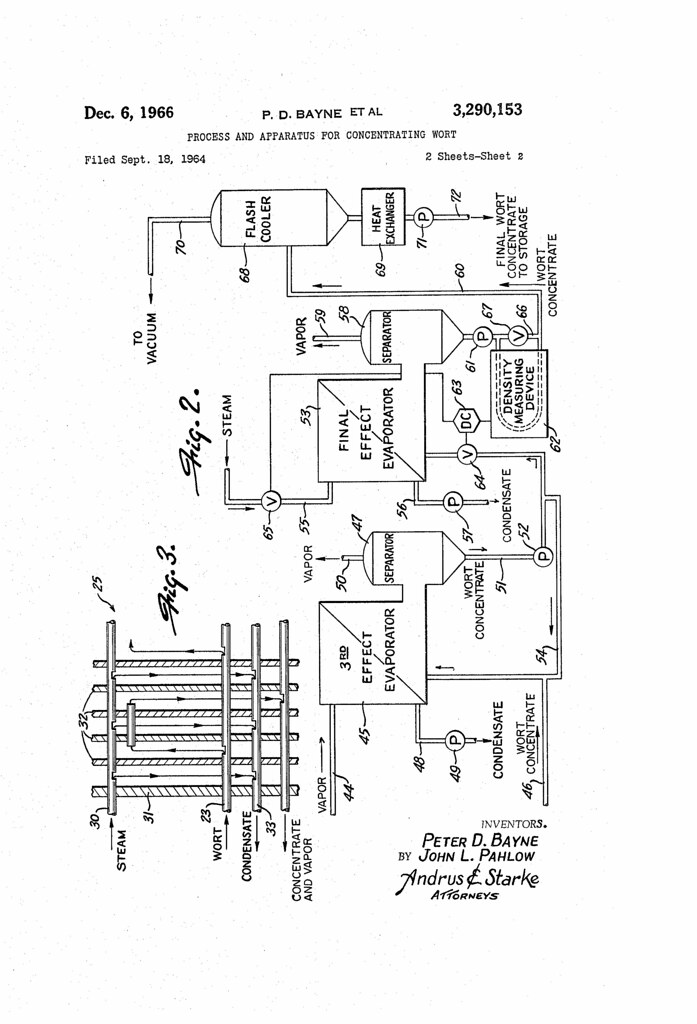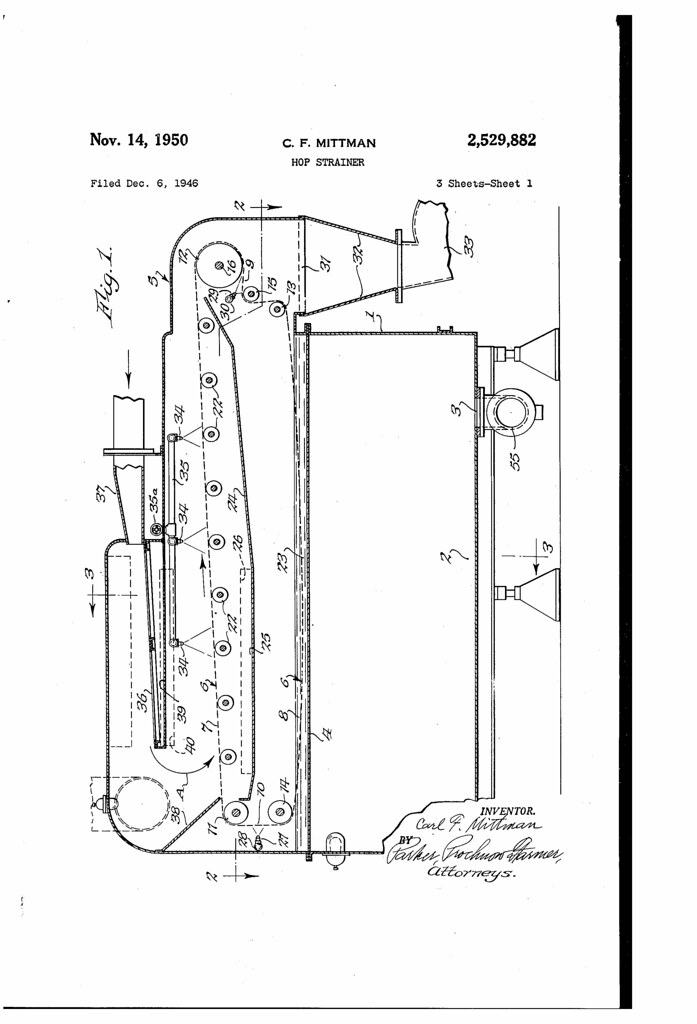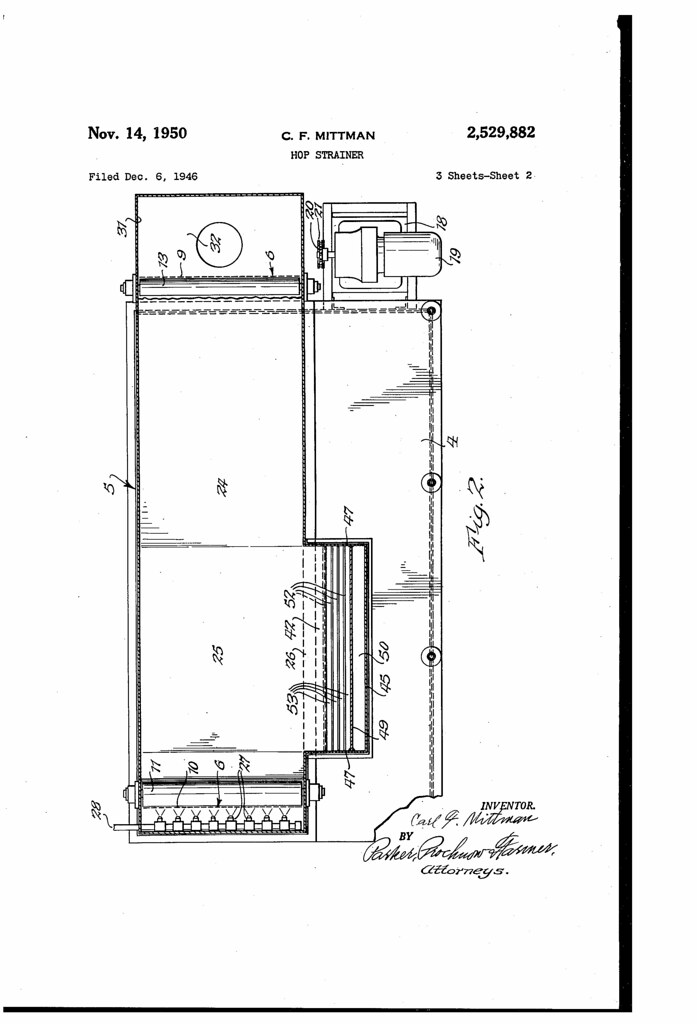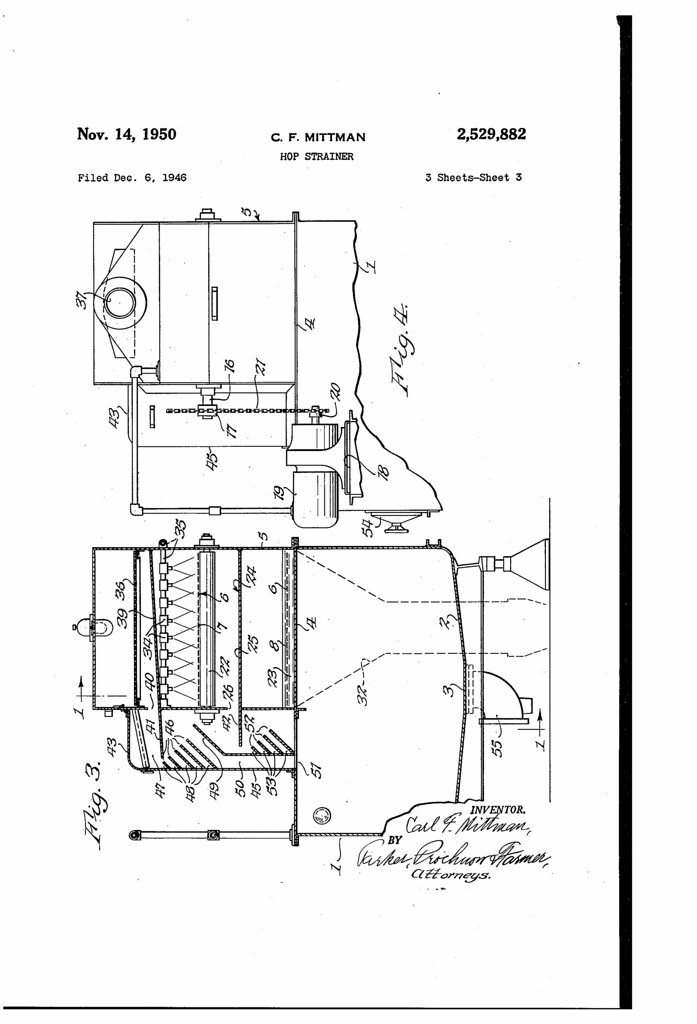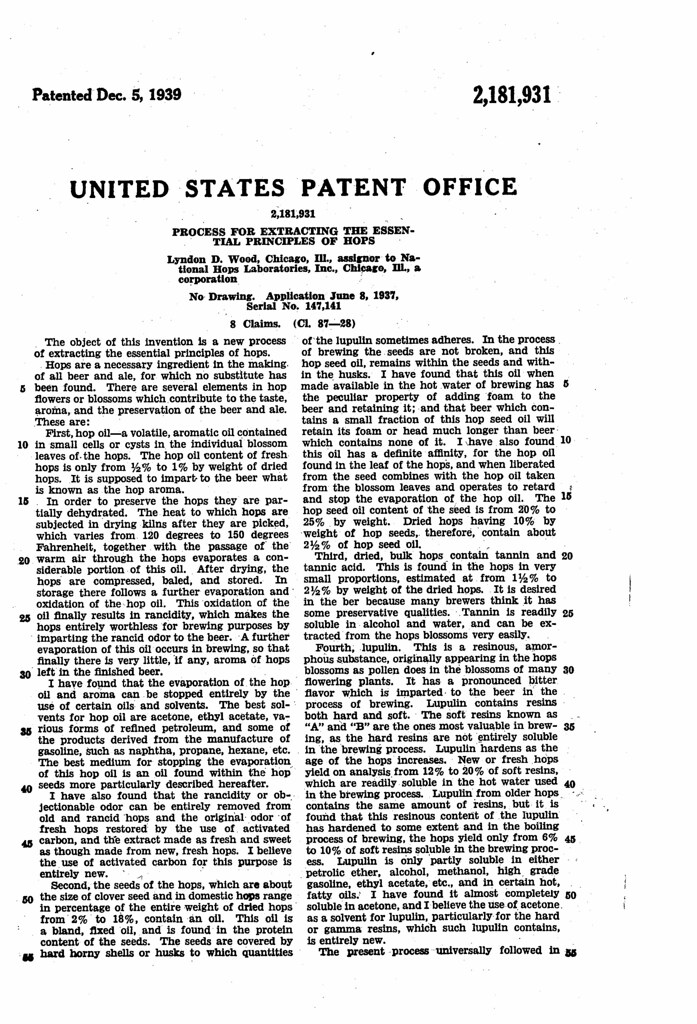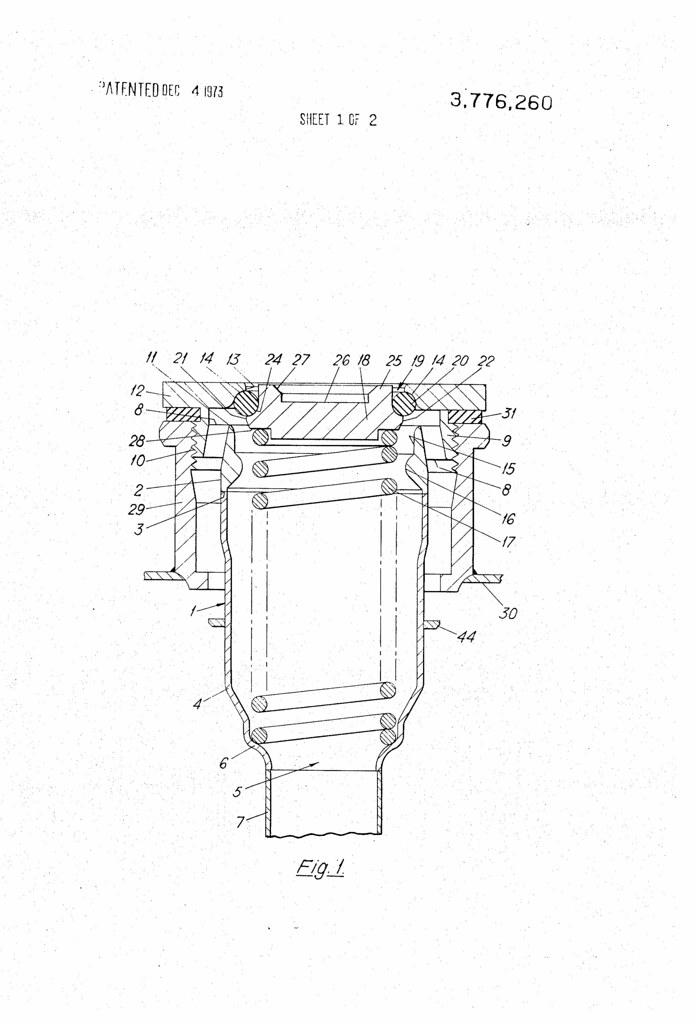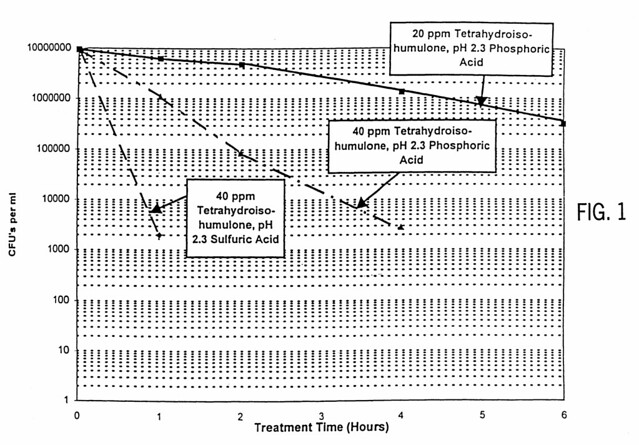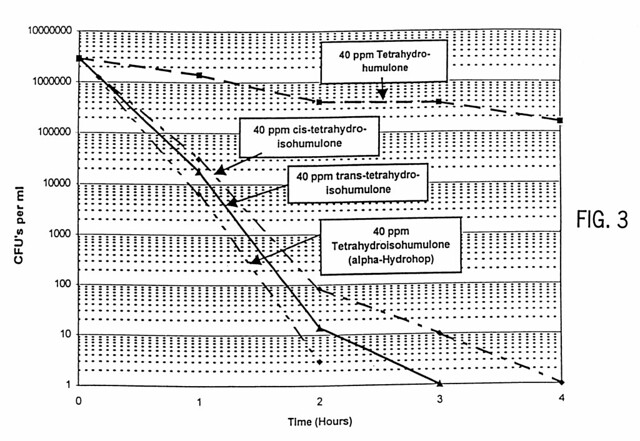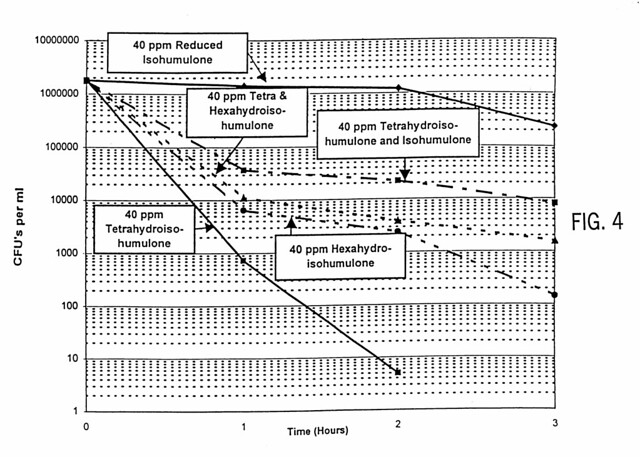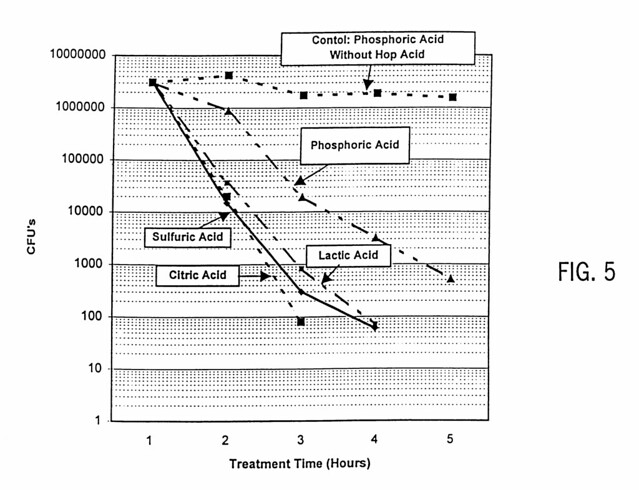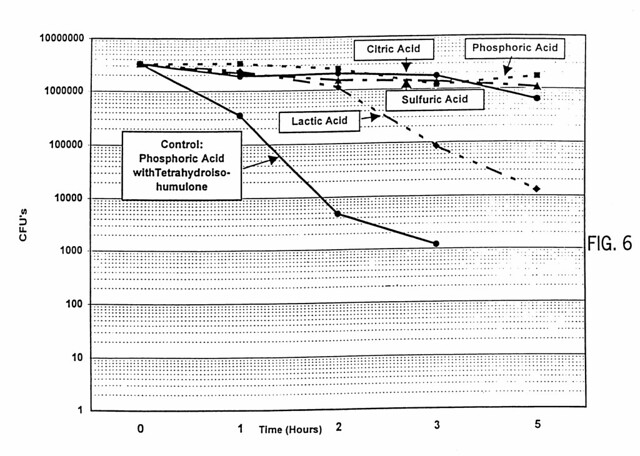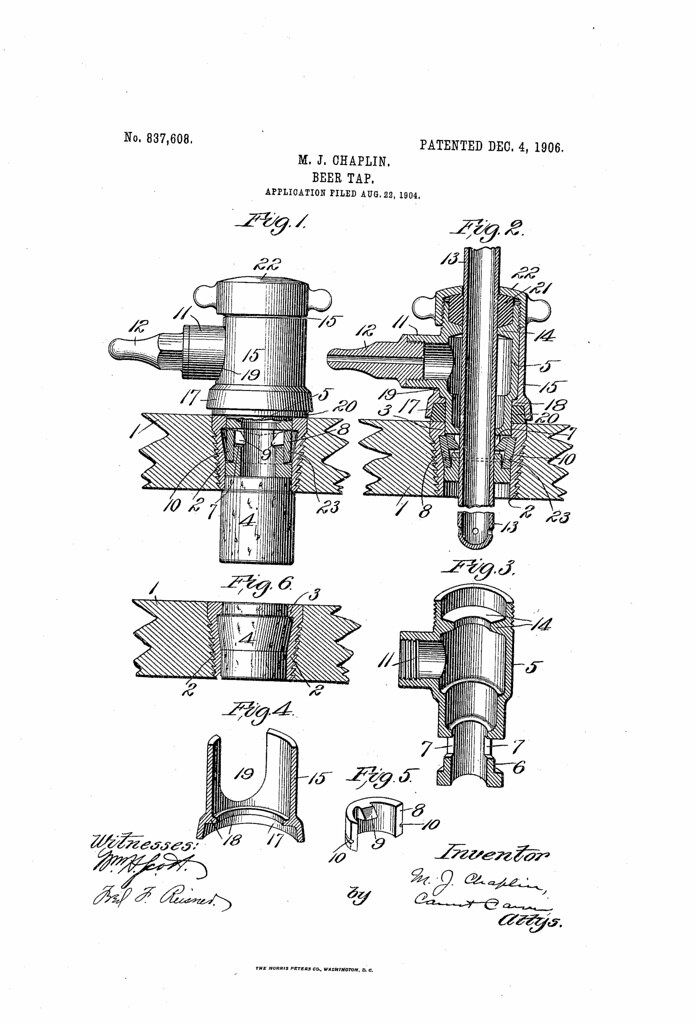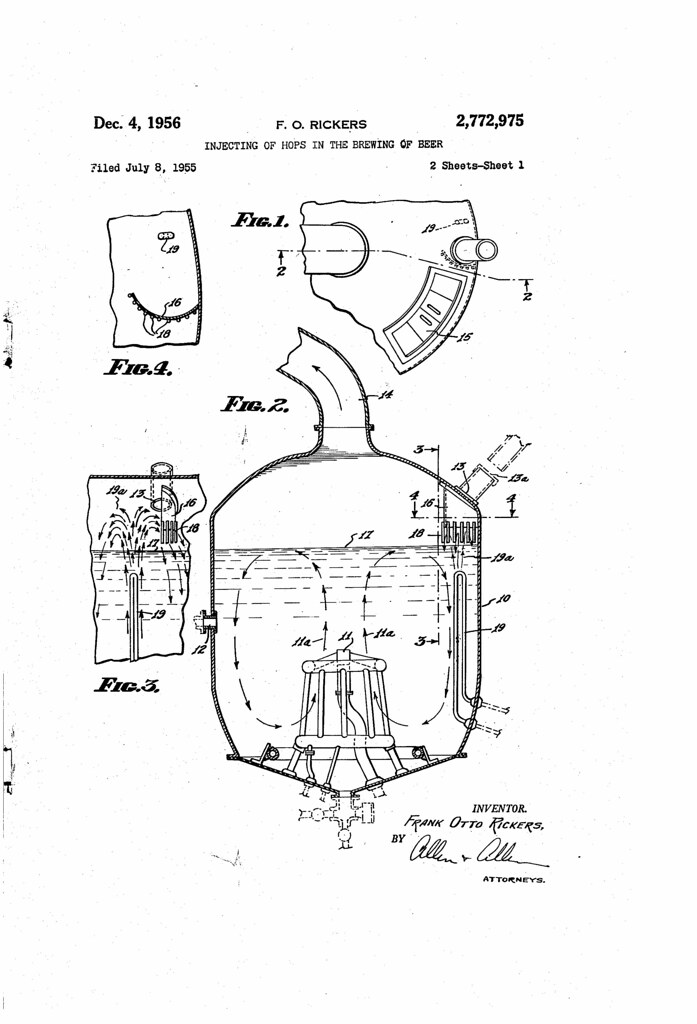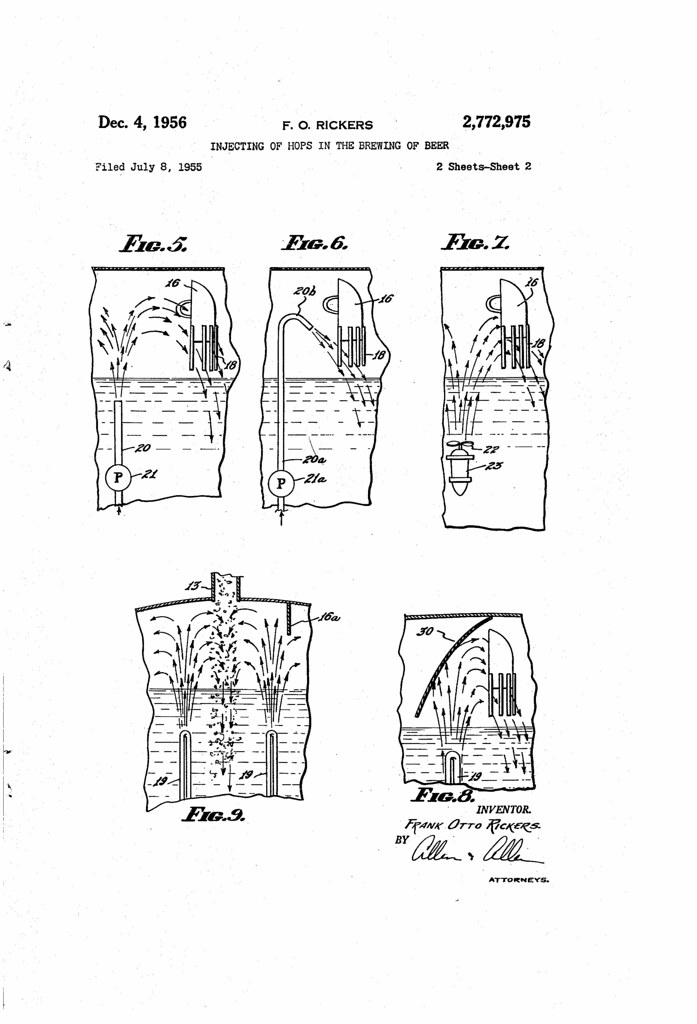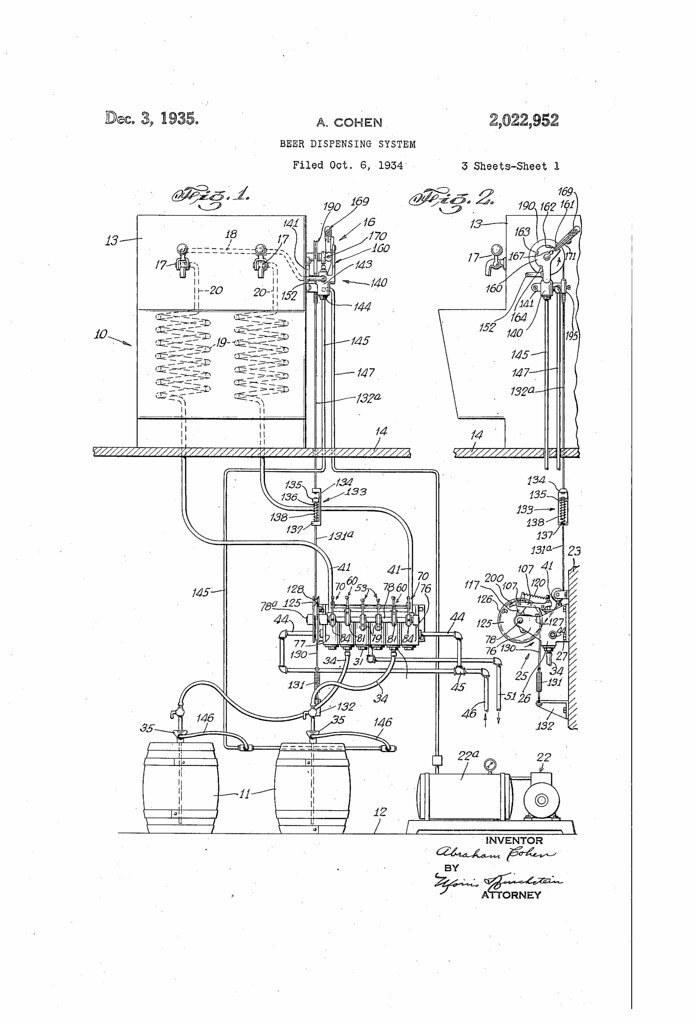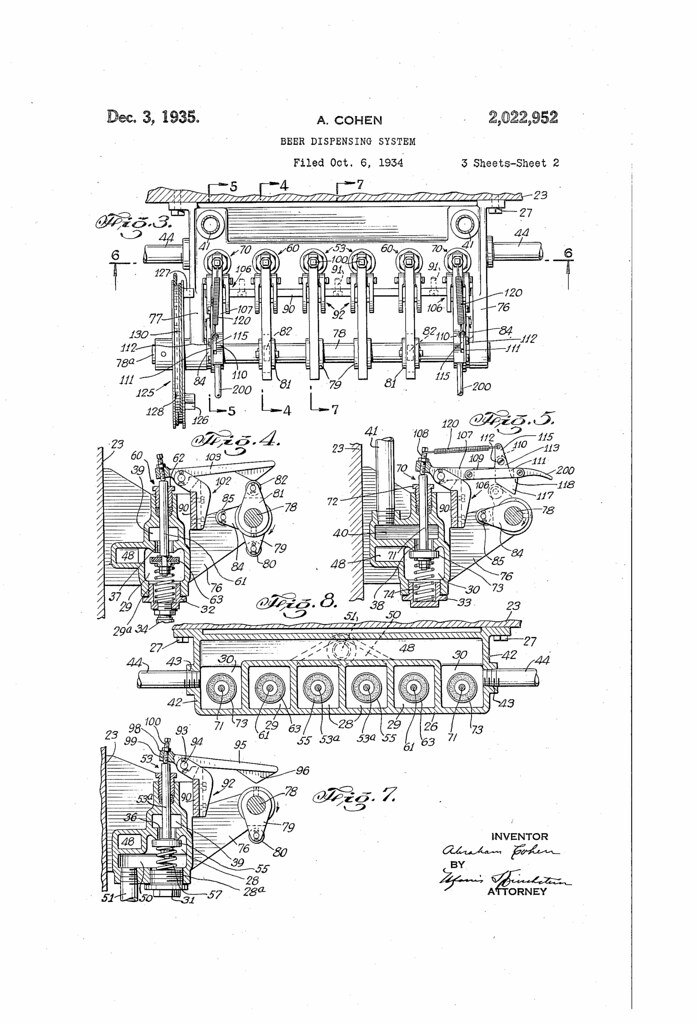
Today in 1943, US Patent 2336280 A was issued, another invention of George E. Miller, for his “Hop Cluster Stemmer.” There’s no Abstract, although in the description it includes this summary:
This invention relates to hop picking machines.
Hops grow on vines which are trained vertically on strings attached .to’ horizontal wires suspended about eighteen feet above the ground. At harvest time the vines are pulled down and hauled to a plant where they are run through a machine which picks the hops from the vines. The picked hops are then separated from the leaves, etc.
From the time the vine is pulled down in the hop field to the time it is fed into the picking machine, it receives considerable handling in the course of which clusters become detached from the vine. A cluster comprises an arm or branch of the vine bearing a cluster of hops. Heretofore the only satisfactory way to salvage the hops on these clusters was to pick them off by hand-an expensive, laborious task.
The object of this invention is to provide a machine for doing this work.
